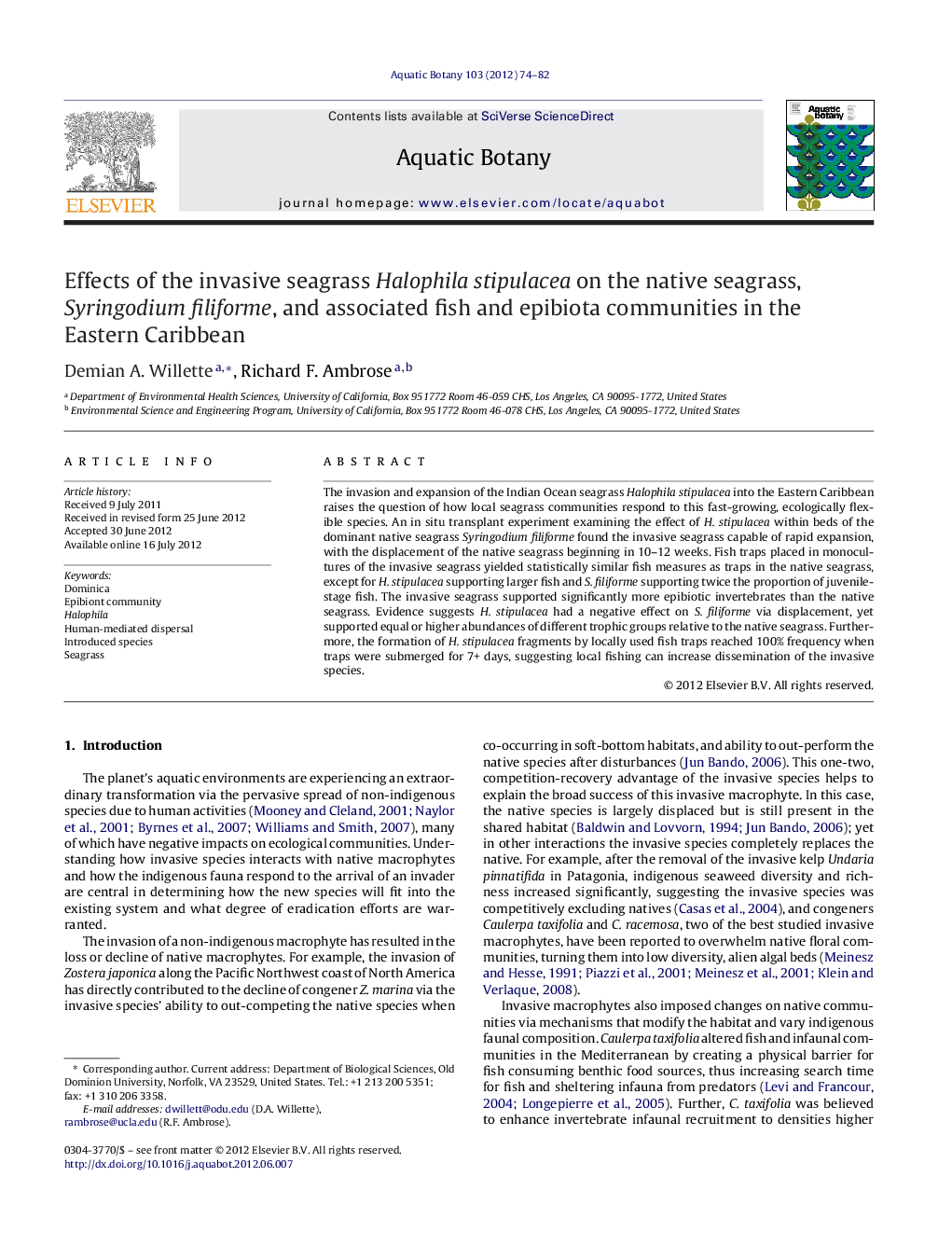| Article ID | Journal | Published Year | Pages | File Type |
|---|---|---|---|---|
| 4528005 | Aquatic Botany | 2012 | 9 Pages |
The invasion and expansion of the Indian Ocean seagrass Halophila stipulacea into the Eastern Caribbean raises the question of how local seagrass communities respond to this fast-growing, ecologically flexible species. An in situ transplant experiment examining the effect of H. stipulacea within beds of the dominant native seagrass Syringodium filiforme found the invasive seagrass capable of rapid expansion, with the displacement of the native seagrass beginning in 10–12 weeks. Fish traps placed in monocultures of the invasive seagrass yielded statistically similar fish measures as traps in the native seagrass, except for H. stipulacea supporting larger fish and S. filiforme supporting twice the proportion of juvenile-stage fish. The invasive seagrass supported significantly more epibiotic invertebrates than the native seagrass. Evidence suggests H. stipulacea had a negative effect on S. filiforme via displacement, yet supported equal or higher abundances of different trophic groups relative to the native seagrass. Furthermore, the formation of H. stipulacea fragments by locally used fish traps reached 100% frequency when traps were submerged for 7+ days, suggesting local fishing can increase dissemination of the invasive species.
► Transplanted invasive seagrass plugs showed rapid expansion and evidence of displacement of a native Caribbean seagrass species. ► The invasive seagrass supported higher abundances of epibionts than the native seagrass, and possibly distinct fish catches. ► Potentially dispersing fragments of the invasive seagrass were created by locally used fish traps with frequency increasing with submergence time.
